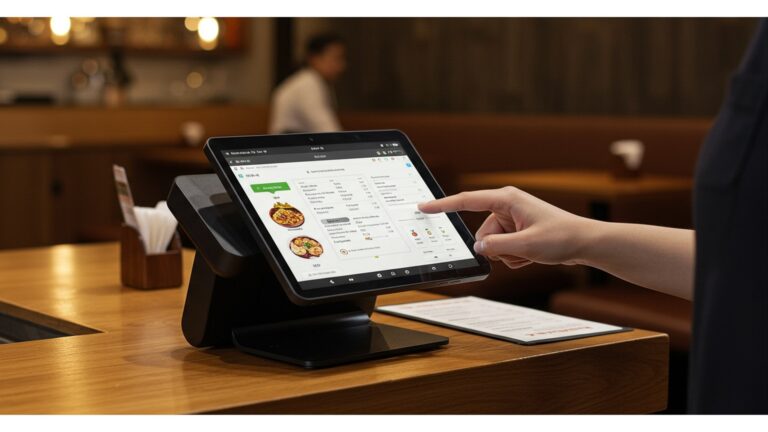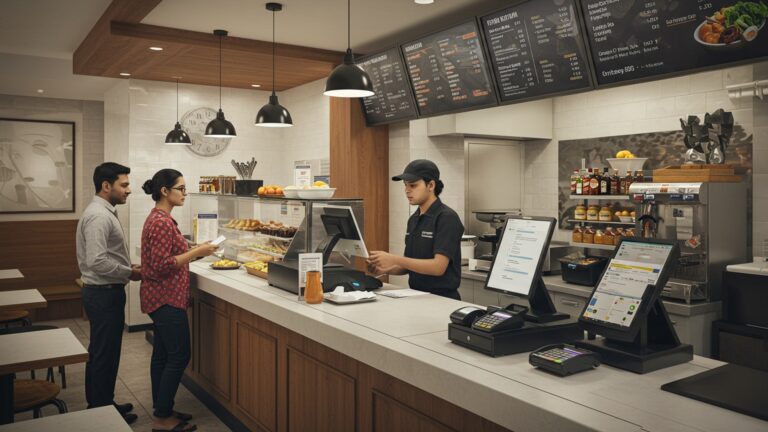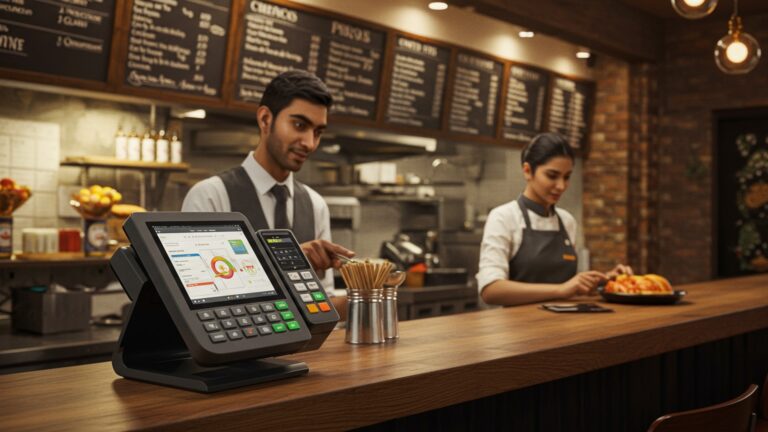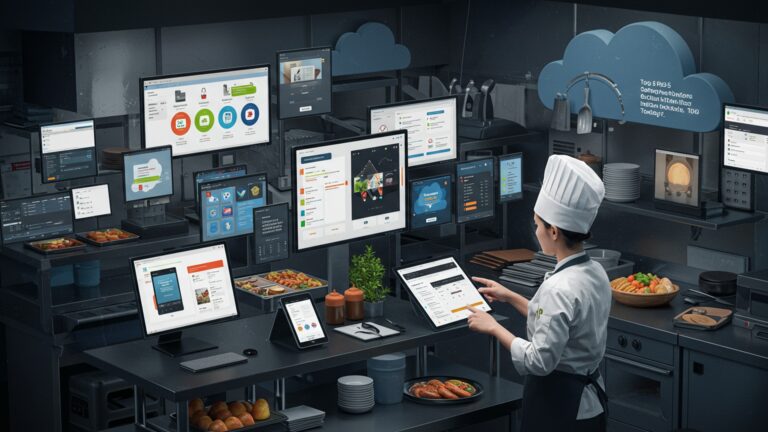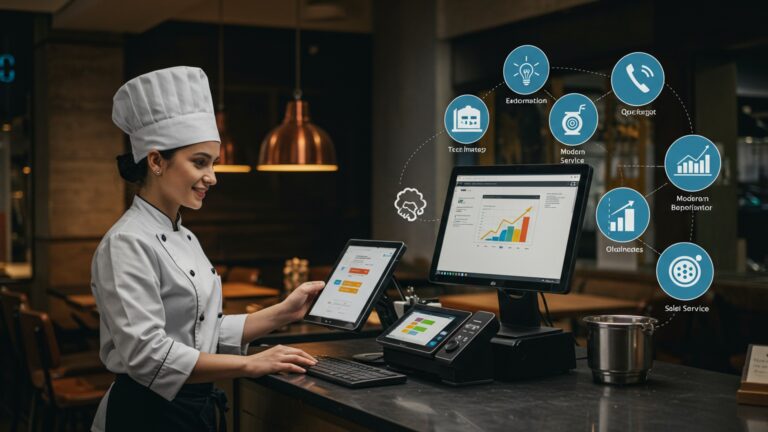Guide to 10 Must-Have Restaurant POS Software Solutions India
Navigating India’s fiercely competitive restaurant landscape demands more than just culinary excellence; it requires a robust operational backbone. Modern Restaurant POS software India transcends basic billing, evolving into a strategic tool that integrates real-time inventory management, seamless table booking. crucial third-party delivery platform integration for aggregators like Swiggy and Zomato. As cloud-based solutions become standard, enabling multi-outlet control and data-driven decision-making, selecting a system that also efficiently handles dynamic pricing and GST compliance is paramount. The right POS empowers establishments to optimize efficiency, elevate the customer journey. significantly boost profitability in today’s digital-first market.
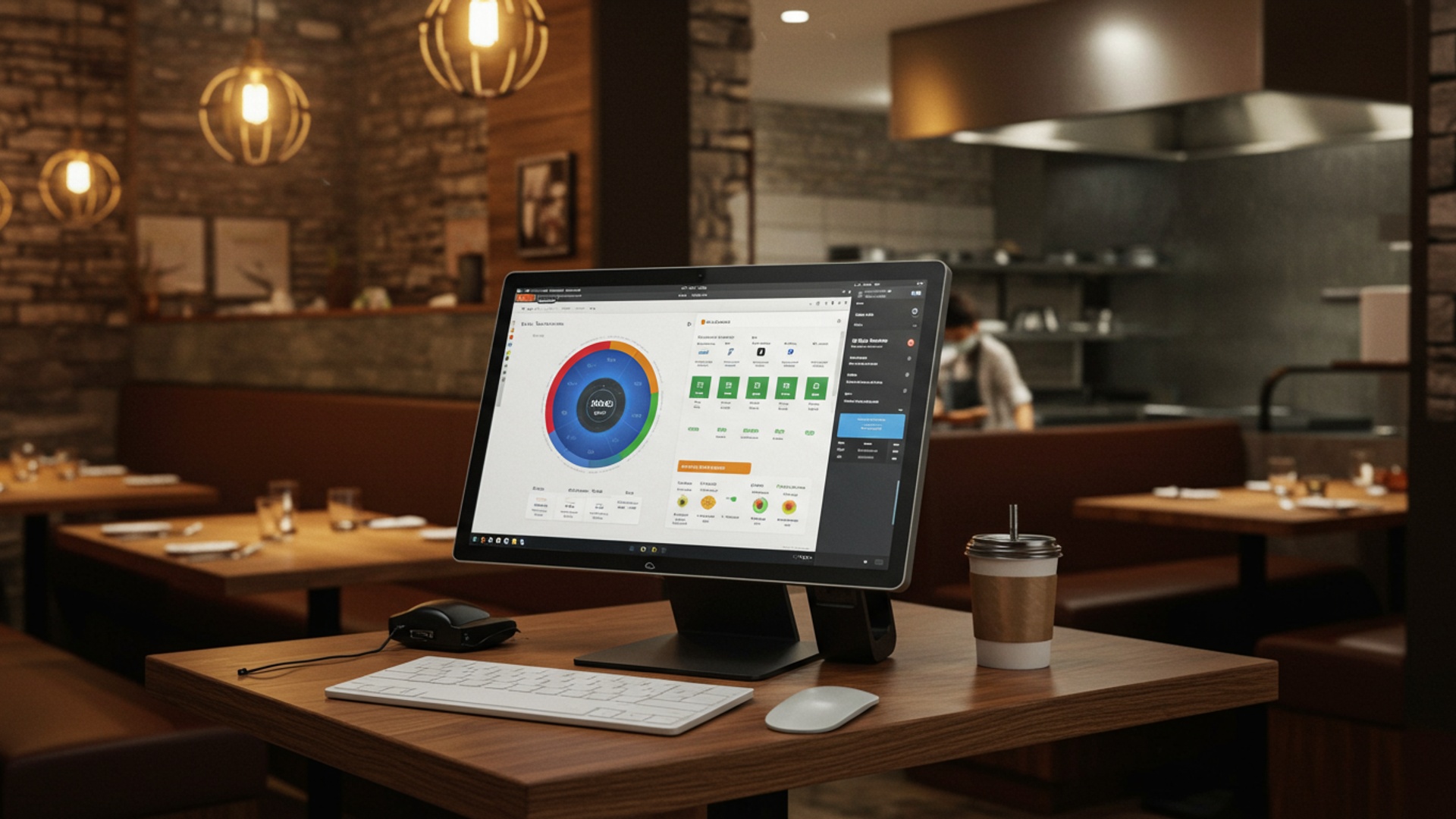
Understanding Restaurant POS Software: The Digital Backbone of Modern Dining
In today’s fast-paced culinary world, managing a restaurant efficiently goes far beyond just serving great food. It demands precision, speed. seamless operations across various touchpoints. This is where a Point-of-Sale (POS) system becomes indispensable. A Restaurant POS software India is not merely a cash register; it’s a comprehensive digital ecosystem designed to streamline every aspect of a restaurant’s operations, from order taking to inventory management and customer relationship building.
At its core, a POS system is a combination of hardware (like touchscreens, printers, card readers) and software that facilitates transactions. But, modern restaurant POS solutions extend far beyond this basic function. They integrate various modules to provide a holistic view and control over the business. Consider a bustling cafe in Bengaluru: without a robust POS, managing peak hour orders, tracking ingredients. processing diverse payment methods would be chaotic. A well-chosen Restaurant POS software India acts as the central nervous system, ensuring smooth details flow and efficient task execution, allowing staff to focus more on guest experience.
Key components typically include:
- Order Management
- Payment Processing
- Inventory Management
- Customer Relationship Management (CRM)
- Reporting & Analytics
Taking orders, customizing items, sending them to the kitchen/bar. managing tables.
Handling various payment types, including cash, cards, UPI. digital wallets.
Tracking ingredients, managing stock levels, reducing waste. automating purchase orders.
Building customer databases, loyalty programs. personalized marketing.
Generating detailed reports on sales, popular items, staff performance. financial summaries.
Decoding Essential Features for Your Indian Restaurant
When selecting a Restaurant POS software India, understanding its core capabilities is crucial. The right features can significantly boost efficiency, reduce costs. enhance customer satisfaction. Here are the must-have functionalities you should look for:
- Intuitive Order Management
- Table Management
- KOT (Kitchen Order Ticket) & BOT (Bar Order Ticket) Management
- Menu Customization
- Split Billing
- Robust Inventory Control
- Real-time Stock Tracking
- Ingredient Level Tracking
- Vendor Management
- Waste Management
- Comprehensive Payment Processing
- Multi-Payment Options
- Integrated Payment Gateways
- Online Payment Integration
- Powerful Reporting & Analytics
- Sales Reports
- Inventory Reports
- Staff Performance
- Profit & Loss Statements
- Customer Relationship Management (CRM)
- Customer Database
- Loyalty Programs
- Feedback Management
- Integrations
- Online Food Aggregators
- Accounting Software
- Third-party Delivery Management
- GST Compliance
- Automated GST Calculation
- GST-Ready Invoices
- GST Report Generation
Visual representation of your floor plan, allowing easy assignment, merging. splitting of tables.
Automated printing or digital display of orders in the kitchen/bar, ensuring accuracy and speed.
Ability to add modifiers (e. g. , “extra cheese,” “less spicy”), combos. special instructions.
Seamlessly splitting bills by items or equally among diners, a common request in Indian dining.
This is critical for cost management.
Knowing exactly what you have in stock at any moment.
For instance, a single pizza order deducts flour, cheese, sauce, etc. , from inventory.
Tracking supplier insights and purchase orders.
Recording spoilage or waste to get accurate food cost.
Accepting cash, credit/debit cards, UPI, mobile wallets (Paytm, Google Pay, PhonePe). even digital food vouchers.
Seamless integration with payment terminals to reduce manual errors and speed up transactions.
For delivery and pickup orders placed through your website or app.
Data is gold.
Daily, weekly, monthly sales breakdowns, identifying peak hours and popular dishes.
Stock levels, consumption. low-stock alerts.
Tracking individual staff sales, tips. clock-in/out times.
Providing insights into the financial health of your restaurant.
Building loyalty.
Storing customer details, order history. preferences.
Managing points, discounts. special offers for returning customers.
Collecting and acting on customer reviews.
The modern restaurant operates within an ecosystem.
Seamless integration with Swiggy, Zomato, etc. , to manage online orders directly from the POS.
Exporting data to Tally, Zoho Books, or QuickBooks for easy financial reconciliation.
Optimizing delivery logistics.
Crucial for the Indian market.
Ensuring accurate tax application on bills.
Generating invoices that meet all GST regulatory requirements.
Simplifying tax filing processes.
Navigating the Indian Culinary Landscape with Smart POS Choices
India’s restaurant industry is uniquely dynamic, characterized by diverse culinary traditions, varying operational scales. a rapidly evolving digital payment landscape. A generic POS solution often falls short; a specialized Restaurant POS software India is designed to address these specific challenges and opportunities.
- Diverse Restaurant Formats
- Price Sensitivity
- Manpower Management
- Hyperlocal Delivery Ecosystem
- Regulatory Compliance
From fine-dining establishments and bustling QSRs (Quick Service Restaurants) to street-side cafes and traditional dhabas, each has distinct operational needs.
Many establishments, particularly smaller ones, operate on tight margins, making cost-effective solutions paramount.
High attrition rates and the need for simplified interfaces for diverse staff backgrounds.
The dominance of aggregators like Swiggy and Zomato necessitates seamless integration.
Navigating specific tax structures like GST requires specialized billing features.
- Digital Payment Adoption
- Growing Demand for Online Ordering
- Data-Driven Decision Making
- Cloud-Based Accessibility
India is a leader in digital payments (especially UPI). A POS that integrates these flawlessly is a huge advantage.
Beyond aggregators, many restaurants are building their direct online ordering channels.
The sheer volume of transactions offers rich data for menu optimization, marketing. operational improvements.
Managing multiple outlets or accessing reports remotely provides flexibility for growing chains.
For instance, a cloud-based Restaurant POS software India can empower a chain of cafes across Mumbai and Pune to centralize their menu updates, track inventory across locations. consolidate sales reports, providing a bird’s-eye view of their entire business. Similarly, for a standalone restaurant in Delhi, a POS system that simplifies GST compliance and integrates with local payment gateways saves immense administrative time and reduces errors.
A Deep Dive into 10 Leading Restaurant POS Software Solutions in India
Choosing the right Restaurant POS software India can be a game-changer. Here’s a look at some of the prominent players in the Indian market, each with its unique strengths:
| Software Name | Key Strength / USP | Ideal For | Notable Features |
|---|---|---|---|
| 1. Petpooja | Comprehensive, cloud-based, strong aggregator integration. | All restaurant types, especially those relying on online delivery. | Online order reconciliation, inventory management, CRM, robust reporting. |
| 2. Posist | Enterprise-grade solution, scalable for large chains, advanced analytics. | Multi-outlet restaurants, large chains, fine dining. | Centralized menu/inventory, advanced analytics, enterprise reporting, loyalty programs. |
| 3. LimeTray | Focus on digital ordering and customer engagement, strong online presence builder. | Restaurants prioritizing direct online orders and marketing. | Online ordering website builder, CRM, marketing tools, delivery management. |
| 4. RanceLab FusionRetail™ 6 | Feature-rich, robust for diverse retail & hospitality needs, strong inventory. | Restaurants, bakeries, cafes. multi-format F&B businesses. | Advanced inventory, recipe management, loyalty, multi-store support. |
| 5. Torqus | Robust solution with a focus on supply chain and central kitchen management. | Restaurant chains, cloud kitchens. those with complex supply needs. | Centralized kitchen management, procurement, detailed inventory control, BI tools. |
| 6. Gofrugal | All-in-one retail & restaurant solution, good for diverse business models. | Small to large restaurants, bakeries, cafes. QSRs. | Mobile POS, self-ordering kiosks, inventory, financial accounting, loyalty. |
| 7. HDPOS Smart | Affordable, user-friendly, good for small to medium businesses. | Small restaurants, cafes, food stalls. local eateries. | Simple interface, billing, basic inventory, customer management. |
| 8. eZee BurrP! | Part of a larger hospitality suite, strong for hotels and integrated F&B. | Restaurants within hotels, large resorts, fine dining. | Integrated with hotel PMS, detailed menu engineering, multi-language support. |
| 9. LogiPOS | Focus on ease of use and affordability, good local support. | Small and medium-sized restaurants, cafes. bakeries. | Simple billing, inventory, basic reporting, local support focus. |
| 10. SwilERP (F & B) | Comprehensive ERP features for F&B, strong on inventory and accounting. | Medium to large restaurants, those needing integrated ERP functions. | Detailed inventory, recipe management, payroll, accounting integration, CRM. |
Implementing Your Restaurant POS System: A Strategic Roadmap
Selecting a Restaurant POS software India is just the first step. Successful implementation requires careful planning and execution. Here’s an actionable roadmap to ensure a smooth transition and maximize your investment:
- Before looking at software, list your specific pain points and must-have features. Are you struggling with inventory? Need better online order management?
- Determine your budget for both the software (subscription/one-time) and hardware.
- Shortlist 3-5 potential vendors based on your needs.
- Request detailed demonstrations. Pay attention to how the system handles scenarios common in your restaurant (e. g. , splitting bills, applying discounts, managing peak hours).
- Ask for testimonials or case studies, especially from similar restaurants in India.
- Menu Entry
- Inventory Setup
- Hardware Configuration
Accurately input your entire menu, including prices, modifiers. kitchen instructions. This is crucial.
Map out all your raw materials, recipes. current stock levels. This is often the most time-consuming but critical step.
Ensure all hardware (POS terminals, printers, card readers) is correctly installed and connected to the software.
- Comprehensive Training Sessions
- Role-Based Training
- Practice Runs
Train all staff – waiters, kitchen staff, managers – on how to use the system effectively.
Customize training for different roles. For example, kitchen staff need to grasp KOTs, while managers need reporting access.
Conduct mock service days with the new system before going live. This helps identify glitches and boosts staff confidence.
- Phased Rollout
- On-Site Support
- Regular Reviews
If possible, consider a soft launch or implement it during off-peak hours.
Have a vendor representative or a trained staff member on standby during the initial days after going live.
Schedule weekly or monthly check-ins with your team to gather feedback, address issues. identify areas for optimization.
A real-world application of this would be a QSR chain expanding from one to five outlets. Initially, they might use a basic billing system. But with expansion, they’d need a robust Restaurant POS software India that offers centralized menu management, inventory tracking across locations. consolidated sales reports. Implementing such a system carefully, with dedicated training, ensures consistency in operations and customer experience across all new outlets, preventing operational bottlenecks.
The Future of Dining: Emerging Trends in POS Technology
The restaurant industry is constantly evolving. so is the technology that supports it. Looking ahead, several trends are shaping the future of Restaurant POS software India, promising even greater efficiency, personalization. customer engagement.
- AI and Machine Learning for Predictive Analytics
- Cloud-Native & Mobile-First Solutions
- Hyper-Personalization and Customer Journey Integration
- Contactless Dining and Automation
- Enhanced Data Security and Compliance
- Voice AI Integration
Future POS systems will leverage AI to examine vast amounts of data – sales history, weather patterns, local events – to predict demand more accurately. This will enable restaurants to optimize inventory, staff scheduling. even menu pricing, minimizing waste and maximizing profit. Imagine a system suggesting a special offer on hot beverages on a predicted rainy day.
While cloud-based POS is already prevalent, the shift towards truly cloud-native architectures will provide even greater scalability, security. real-time data access from anywhere. Mobile POS (mPOS) devices, like tablets and smartphones, will become ubiquitous, allowing staff to take orders, process payments. manage tables on the go, enhancing table-side service and speeding up operations.
POS systems will go beyond basic CRM. They will integrate with loyalty apps, social media. even wearable tech to offer hyper-personalized experiences. From remembering a customer’s favorite dish and dietary restrictions to sending targeted promotions based on their past orders and location, the focus will be on creating a truly unique dining journey.
The recent global health events have accelerated the adoption of contactless technologies. Future POS systems will seamlessly integrate with QR code-based menus, self-ordering kiosks. touchless payment methods, reducing human interaction points. Automation will extend to robotic food preparation and delivery in some segments, all orchestrated by the central POS.
As POS systems handle sensitive customer and financial data, robust cybersecurity measures will be paramount. Future systems will incorporate advanced encryption, tokenization. biometric authentication to protect against data breaches, along with stricter adherence to evolving data privacy regulations (like India’s upcoming Personal Data Protection Bill).
Imagine customers placing orders via voice commands to a smart assistant integrated with the POS, or kitchen staff receiving instructions audibly. Voice AI could streamline order taking for drive-thrus or even internal kitchen communications.
// Example of a hypothetical voice order processing flow function processVoiceOrder(voiceInput) { // Use Natural Language Processing (NLP) to interpret the order const orderDetails = analyzeVoiceInput(voiceInput); if (orderDetails. item && orderDetails. quantity) { // Send to POS system for processing sendOrderToPOS(orderDetails); return "Order confirmed: " + orderDetails. quantity + " " + orderDetails. item; } else { return "Could you please repeat your order?" ; } }
These trends highlight that a Restaurant POS software India is not a static tool but a dynamic platform continuously evolving to meet the demands of a modern, technology-driven culinary industry. Investing in a future-ready system means staying competitive and agile in a rapidly changing market.
Conclusion
Choosing the right POS isn’t just about features; it’s about finding a partner that truly understands your Indian restaurant’s unique rhythm. We’ve explored ten robust solutions, each offering distinct advantages, from seamless UPI integration to efficient inventory management tailored for local suppliers. My personal tip is to always leverage free trials. Don’t just read reviews; actively involve your staff in testing the software. I’ve seen firsthand how a system that feels intuitive to your team, perhaps with integrated QR code ordering, can dramatically boost service speed and reduce errors, especially during peak hours. Remember the current trend of hyper-local delivery app integration; ensure your chosen POS can fluidly sync with platforms like Zomato or Swiggy to streamline online orders. This isn’t merely a convenience; it’s a necessity for modern Indian dining. Ultimately, investing in the right POS is an investment in your restaurant’s future, propelling you towards greater efficiency, customer satisfaction. sustained growth in India’s vibrant culinary landscape. Take this knowledge and confidently elevate your operations.
More Articles
Guide to 8 Top Restaurant POS Software Benefits for Indian Businesses
Discover 5 Best Restaurant POS Systems for Small Eateries in India
How to Choose the 5 Best POS System Options for Your India Restaurant
Master 7 Essential Android POS Tips for Indian Restaurant Success
FAQs
What exactly is a Restaurant POS system?
It’s the central hub for your restaurant’s operations. Think of it as more than just a cash register; it handles orders, payments, inventory, staff management. even customer loyalty programs, all from one place.
Why should my restaurant in India bother with a POS?
A modern POS can significantly streamline your operations, reduce errors, speed up service, manage inventory better. provide valuable sales data. This ultimately leads to happier customers and a more profitable business, which is crucial in India’s competitive F&B market.
What key features should I look for when picking a POS for my Indian restaurant?
Look for features like efficient order management (including KOT/BOT), multiple payment options (cash, cards, UPI), inventory tracking, table management, staff management, loyalty programs. robust reporting. Cloud-based access and good customer support are also big plusses.
How do I even begin to choose the best POS software from so many options?
Start by assessing your restaurant’s specific needs and budget. Consider factors like your restaurant type (cafe, fine dining, quick-service), required features, scalability, ease of use. local support availability. Reading guides like this one can also help you narrow down choices.
Are cloud-based POS systems better than traditional ones, especially for Indian businesses?
Generally, yes. Cloud-based systems offer more flexibility, lower upfront costs, remote access, automatic updates. better data security. For Indian businesses, this means easier scalability, less reliance on expensive hardware. the ability to manage operations from anywhere.
Can a good POS system really help my restaurant save money or make more?
Absolutely! By optimizing inventory, reducing waste, minimizing order errors, speeding up service. providing insights into popular dishes and peak hours, a good POS can directly impact your bottom line. It helps you make smarter decisions that lead to increased revenue and reduced operational costs.
Who is this ‘Guide to 10 Must-Have Restaurant POS Software Solutions India’ meant for?
This guide is perfect for restaurant owners, managers. anyone in the F&B industry in India who is looking to upgrade their current system, implement a new POS, or simply grasp the best available options to improve their restaurant’s efficiency and profitability.


